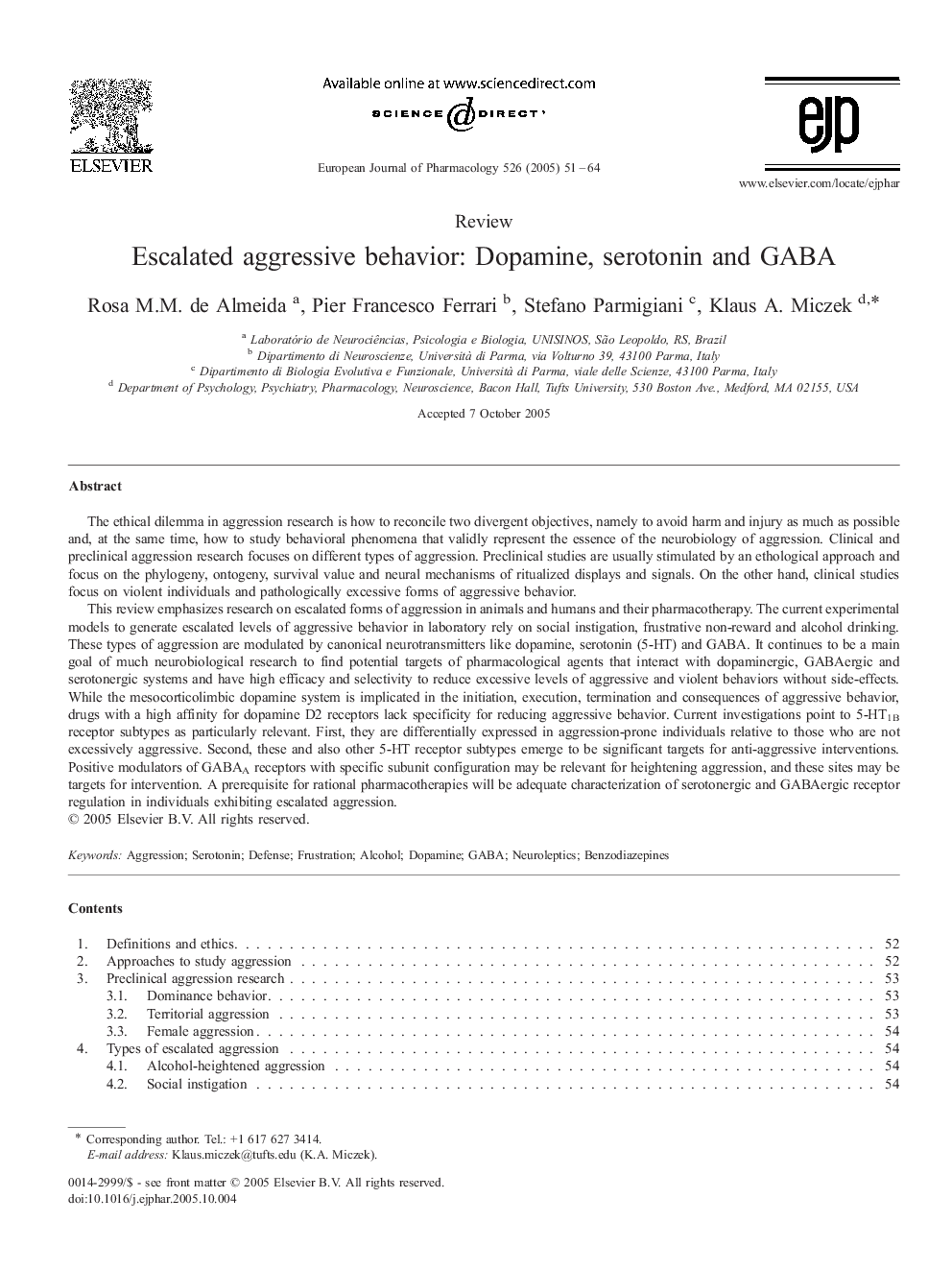| Article ID | Journal | Published Year | Pages | File Type |
|---|---|---|---|---|
| 9920956 | European Journal of Pharmacology | 2005 | 14 Pages |
Abstract
This review emphasizes research on escalated forms of aggression in animals and humans and their pharmacotherapy. The current experimental models to generate escalated levels of aggressive behavior in laboratory rely on social instigation, frustrative non-reward and alcohol drinking. These types of aggression are modulated by canonical neurotransmitters like dopamine, serotonin (5-HT) and GABA. It continues to be a main goal of much neurobiological research to find potential targets of pharmacological agents that interact with dopaminergic, GABAergic and serotonergic systems and have high efficacy and selectivity to reduce excessive levels of aggressive and violent behaviors without side-effects. While the mesocorticolimbic dopamine system is implicated in the initiation, execution, termination and consequences of aggressive behavior, drugs with a high affinity for dopamine D2 receptors lack specificity for reducing aggressive behavior. Current investigations point to 5-HT1B receptor subtypes as particularly relevant. First, they are differentially expressed in aggression-prone individuals relative to those who are not excessively aggressive. Second, these and also other 5-HT receptor subtypes emerge to be significant targets for anti-aggressive interventions. Positive modulators of GABAA receptors with specific subunit configuration may be relevant for heightening aggression, and these sites may be targets for intervention. A prerequisite for rational pharmacotherapies will be adequate characterization of serotonergic and GABAergic receptor regulation in individuals exhibiting escalated aggression.
Related Topics
Life Sciences
Neuroscience
Cellular and Molecular Neuroscience
Authors
Rosa M.M. de Almeida, Pier Francesco Ferrari, Stefano Parmigiani, Klaus A. Miczek,
